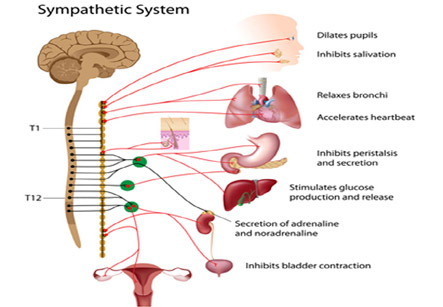Neuroblastoma
Introduction
Neuroblastoma is a cancer of specialized nerve cells called as neural crest cells. These cells are involved in the development of the nervous system and other tissues in embryo.
Neuroblastoma most commonly occurs in:
1. One of the two adrenal glands situated in the abdomen above the kidneys
2. Nerve tissue running alongside the spinal cord, in the neck, chest, abdomen or pelvis.
3. In some cases, neuroblastoma can spread to tissues beyond the original site such as the bone marrow, bone, lymph nodes, liver and skin.
Iranian specialists have made remarkable achievements in infants' surgeries and Iran is among few countries that have gained access to the latest surgical technologies

Signs and symptoms of neuroblastoma
The symptoms of neuroblastoma can vary depending on the site of the tumor. The first symptoms are non-specific vague, such as tiredness, loss of appetite and pain in the bones. The specific symptoms depending on the location include:
1. In abdomen- Lump in the abdomen, constipation or difficulty in passing urine.
2. In the chest- Breathlessness and difficulty in swallowing.
3. If the neck -Lump in the neck and rarely problems in breathing and swallowing.
4. In the skin – it appears as small, blue-colored lumps.
5. If the tumour is pressing on the spinal cord – weakness in the legs and unsteady walk. If the child is not yet walking, there may be reduced leg movements. They may also have constipation or difficulty in passing urine.
6. The child may also have high blood pressure.
Diagnosis:
A variety of investigations are needed to diagnose neuroblastoma. The tests are done to confirm the presence of neuroblastoma and its exact position of the tumor. The tests will also find out whether the neuroblastoma has spread. This process is known as staging.
VMA and HVA tests
Almost all the children with neuroblastoma have the substances vanillyl mandelic acid (VMA) or homovanillic acid (HVA) in their urine. Measuring the VMA and HVA in the urine can help to confirm the diagnosis. The levels of these substances will fall if the treatment is working. As these chemicals are produced by the tumor cells, and can be used to measure tumor activity. They are sometimes known as tumor markers.
MIBG scans
Most children will have an MIBG (metaiodobenzyl guanidine) scan. When given as an injection, MIBG is specifically taken up by neuroblastoma cells. MIBG can also be used as a treatment.
Biopsy
A small sample of cells is usually taken from the tumor during an operation under a general anesthesia. This is known as a biopsy. These cells are then examined under a microscope.
Tumor biology
These tests are also done on tumor cells to look at the chromosomes and ‘biological markers’. One of these ‘markers’ is called MYCN. The presence of a certain amount of MYCN in the cells can suggest that the neuroblastoma is of aggressive type. In this situation, the treatment needs to be more intensive.
Treatment for neuroblastoma
The treatment of neuroblastoma depends on the age of the child, the size and position of the tumor, the tumor biology and its spread.
Surgery
Surgery is useful for tumors that have not spread (localized tumors). A cure is usually possible for children with localized tumors. However, if the tumor is a high-risk one as shown by tumor biology results, further treatment with chemotherapy and possibly radiotherapy is needed.
Chemotherapy
Chemotherapy is the use of anti-cancer (cytotoxic) drugs to destroy cancer cells. It is given as a drip or injection into a vein.
High-dose chemotherapy with stem cell support
This treatment is given if the neuroblastoma has spread to several parts of the body or is high-risk with MYCN amplification.
High doses of chemotherapy wipe out any remaining neuroblastoma cells, but they also wipe out the normal bone marrow, which makes the blood cells. To prevent this, the stem cells are collected from the child through a drip before the chemotherapy and they are then frozen and stored.
The treatment of neuroblastoma depends on the age of the child, the size and position of the tumor, the tumor biology and its spread.
After the chemotherapy, the stem cells are again given back to the child through a drip. They make their way into the bone marrow and develop into mature blood cells over a period of 14-21 days.
Monoclonal antibody treatment
Monoclonal antibodies can destroy some types of cancer cells while causing little harm to normal cells. A new monoclonal antibody treatment called anti-GD2 is currently being tested. The initial results are promising.
Radiotherapy
External radiotherapy may be given if the neuroblastoma is advanced or has spread to several parts of the body. This uses high-energy rays to destroy the cancer cells. External radiotherapy is given from a machine outside the body.
Internal radiotherapy may sometimes be given using radioactive MIBG. A higher dose of MIBG is used to kill the cancer cells.